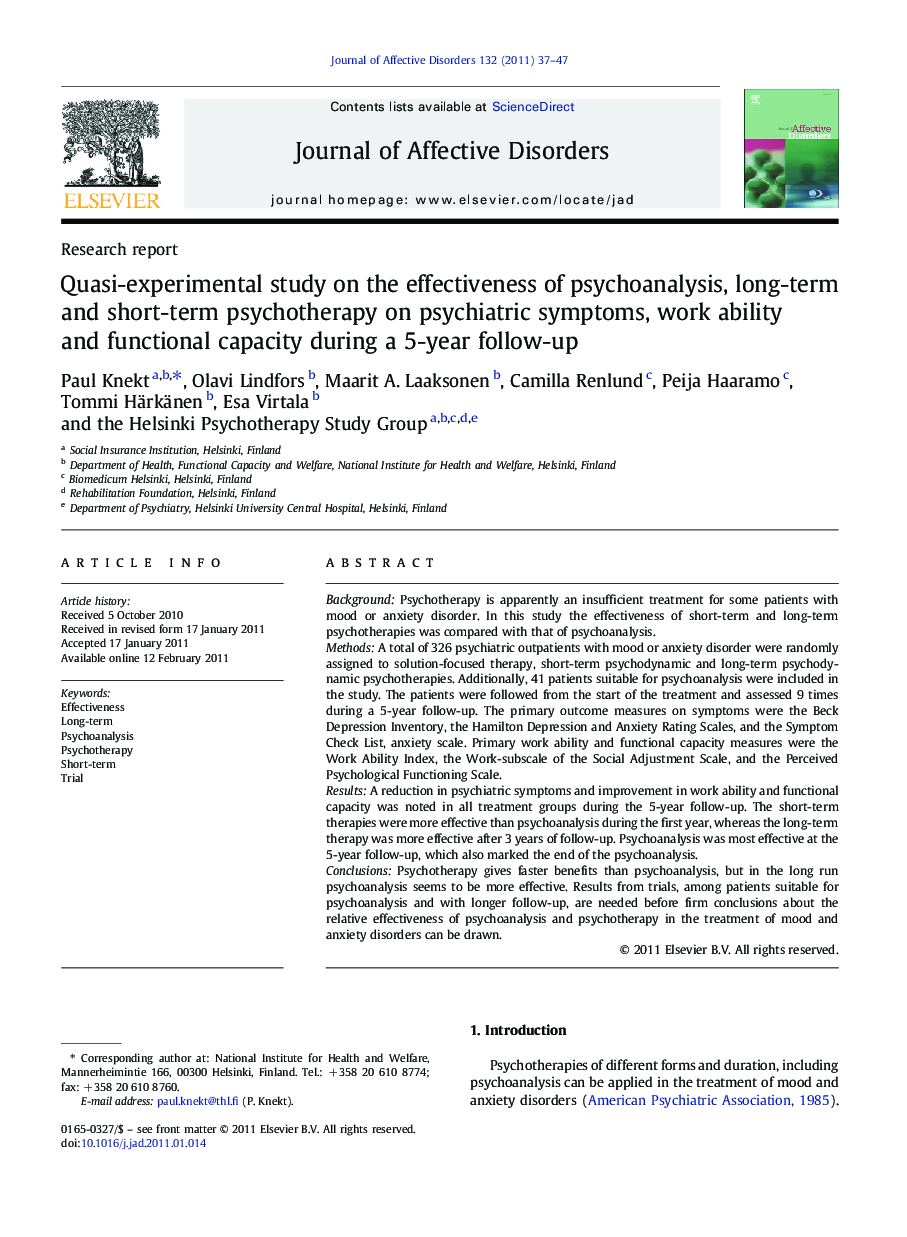| Article ID | Journal | Published Year | Pages | File Type |
|---|---|---|---|---|
| 6236082 | Journal of Affective Disorders | 2011 | 11 Pages |
BackgroundPsychotherapy is apparently an insufficient treatment for some patients with mood or anxiety disorder. In this study the effectiveness of short-term and long-term psychotherapies was compared with that of psychoanalysis.MethodsA total of 326 psychiatric outpatients with mood or anxiety disorder were randomly assigned to solution-focused therapy, short-term psychodynamic and long-term psychodynamic psychotherapies. Additionally, 41 patients suitable for psychoanalysis were included in the study. The patients were followed from the start of the treatment and assessed 9 times during a 5-year follow-up. The primary outcome measures on symptoms were the Beck Depression Inventory, the Hamilton Depression and Anxiety Rating Scales, and the Symptom Check List, anxiety scale. Primary work ability and functional capacity measures were the Work Ability Index, the Work-subscale of the Social Adjustment Scale, and the Perceived Psychological Functioning Scale.ResultsA reduction in psychiatric symptoms and improvement in work ability and functional capacity was noted in all treatment groups during the 5-year follow-up. The short-term therapies were more effective than psychoanalysis during the first year, whereas the long-term therapy was more effective after 3Â years of follow-up. Psychoanalysis was most effective at the 5-year follow-up, which also marked the end of the psychoanalysis.ConclusionsPsychotherapy gives faster benefits than psychoanalysis, but in the long run psychoanalysis seems to be more effective. Results from trials, among patients suitable for psychoanalysis and with longer follow-up, are needed before firm conclusions about the relative effectiveness of psychoanalysis and psychotherapy in the treatment of mood and anxiety disorders can be drawn.
